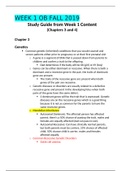Samenvatting
Summary Readings: Diversity Equality and Justice Week 5 + 6
This document contains all the readings for week 5 and 6 of Diversity Equality and Justice. For this course I scored an overall grade of 9.2 by using these notes to study for the quizzes. Study the notes and make sure you get the core of the readings, see if you can summarise the arguments yourself...
[Meer zien]









